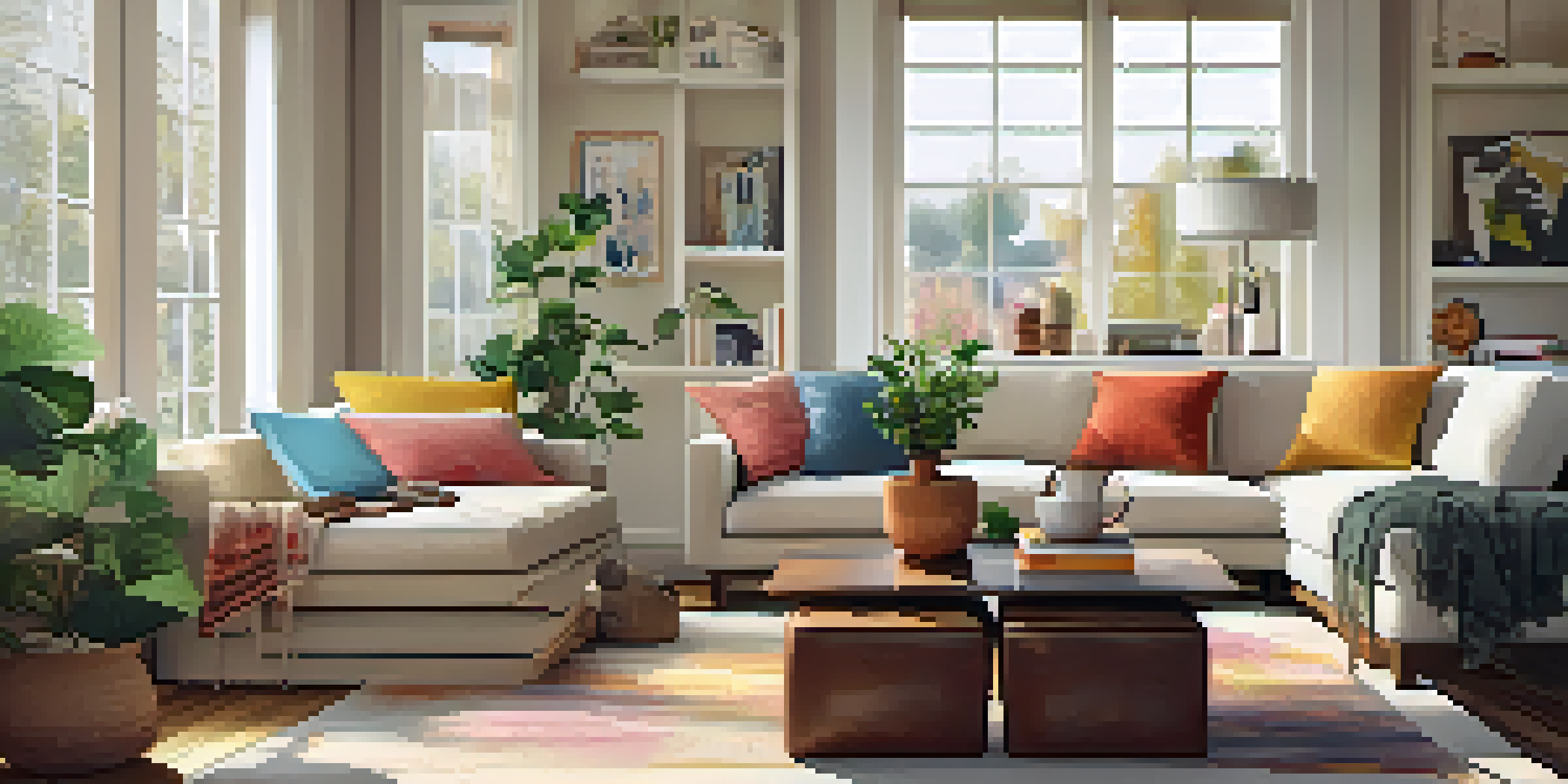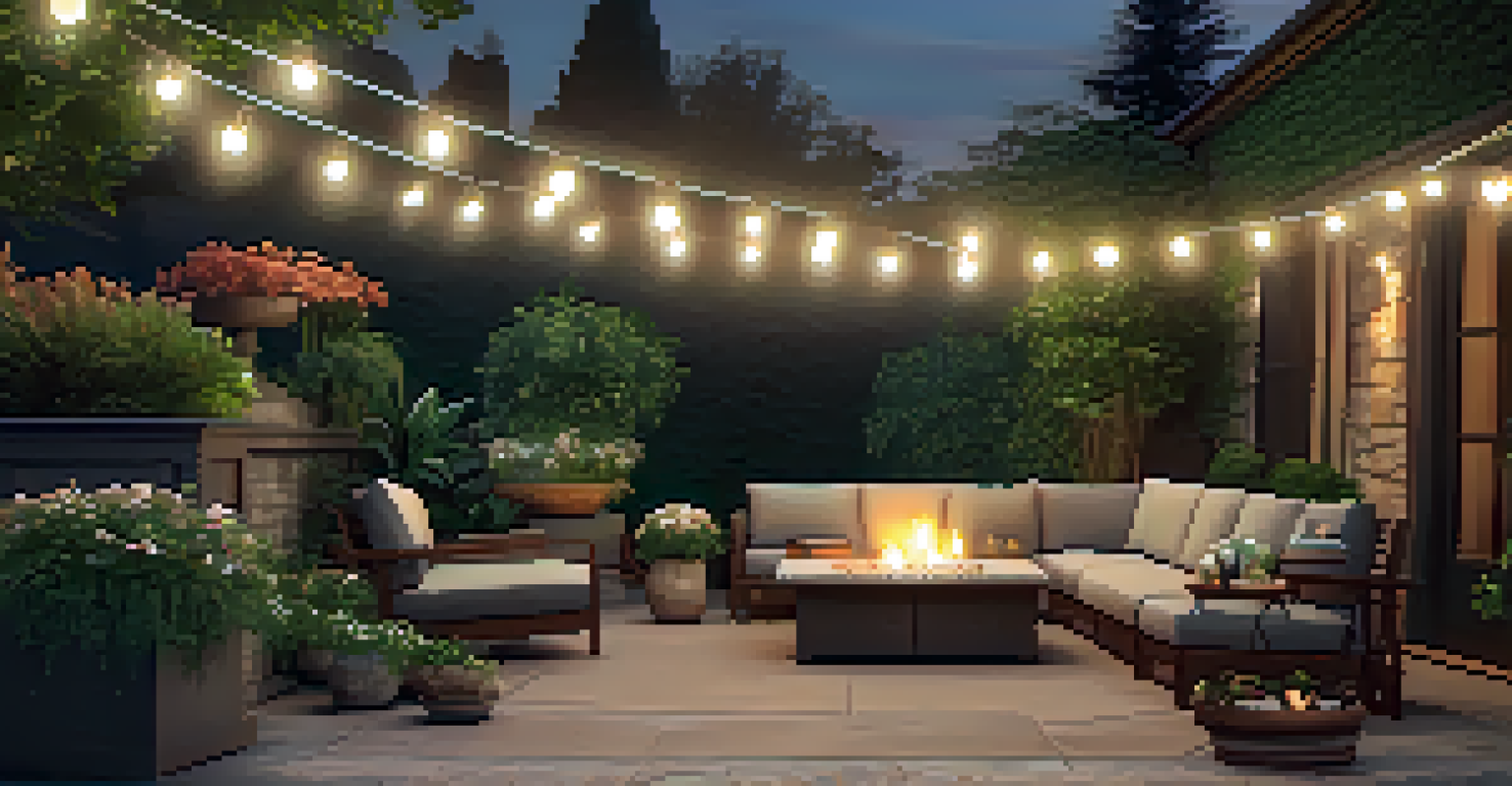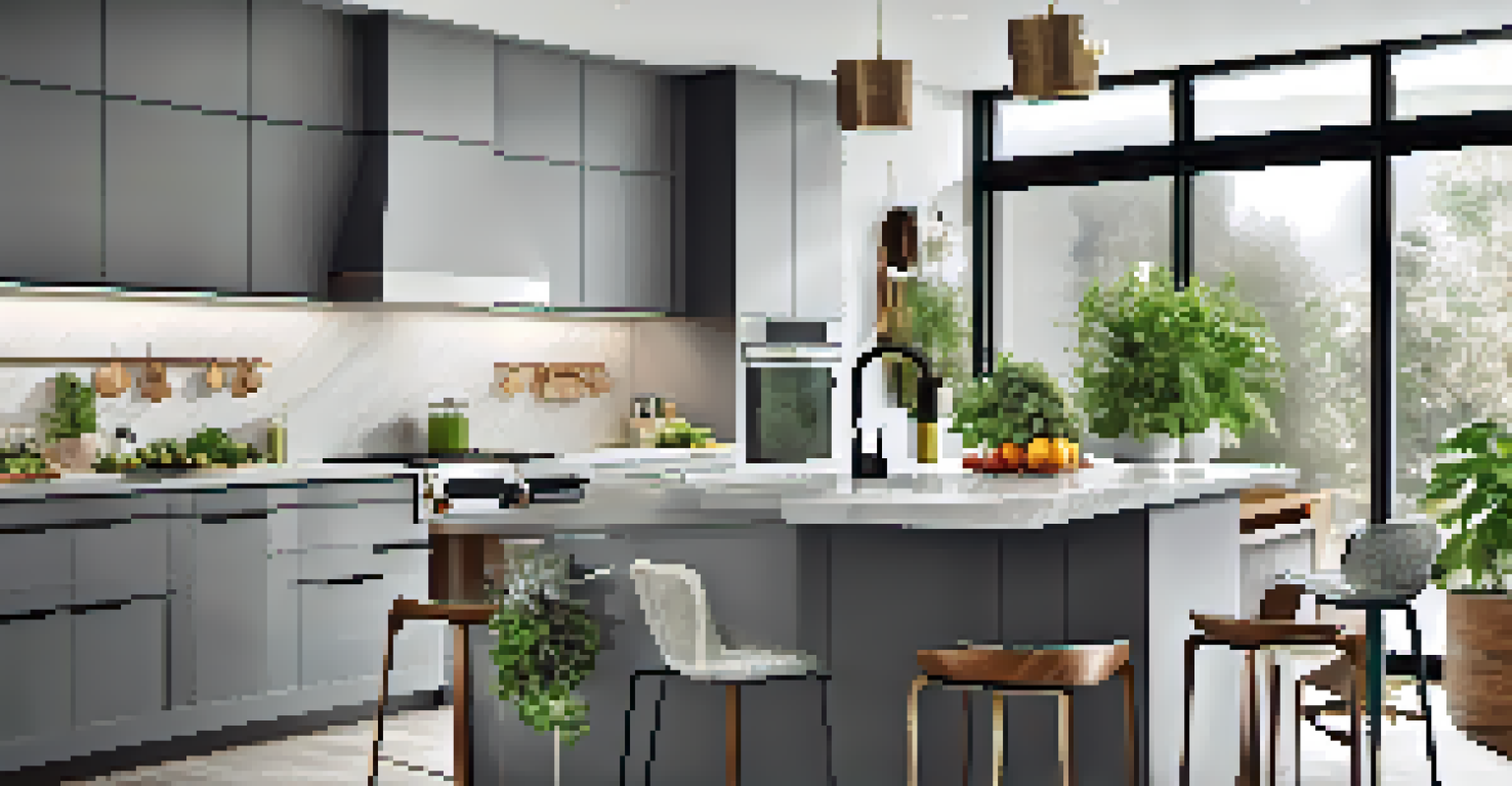Staging Your Home with a Story: Creating a Lifestyle Appeal

Understanding the Importance of Home Staging
Home staging goes beyond simple decor; it's about creating an inviting atmosphere that resonates with potential buyers. When buyers step into a staged home, they should immediately envision their lives unfolding within those walls. This emotional connection can significantly influence their decision-making process.
Home staging is not about decorating; it's about creating an emotional connection between the buyer and the property.
A well-staged home showcases its best features while minimizing distractions. Think of it as setting the stage for a play, where every element is intentionally curated to tell a story. This storytelling approach helps buyers imagine how they would live in the space, making it more appealing.
Moreover, homes that are staged typically sell faster and for a higher price. By evoking a lifestyle that buyers aspire to, you increase the chances of receiving competitive offers. In essence, staging your home is an investment in your selling strategy.
Creating a Lifestyle Appeal Through Design
To create a lifestyle appeal, begin by defining the target demographic you want to attract. Are you aiming for young families, professionals, or retirees? Understanding your audience allows you to tailor your staging efforts to resonate with their aspirations and daily routines.

Next, choose a design style that aligns with the lifestyle you wish to convey. For instance, a cozy, family-oriented atmosphere might feature warm colors, inviting furniture, and playful accents. Conversely, a modern, minimalist approach could appeal to young professionals looking for a sleek and sophisticated vibe.
Home Staging Creates Emotional Bonds
A well-staged home evokes an emotional connection, helping buyers envision their lives within the space.
Incorporating elements that reflect a desirable lifestyle, such as a home office for remote workers or a cozy reading nook, can further enhance your appeal. These thoughtful touches help potential buyers imagine their lives in the space, making your home more memorable.
Utilizing Color and Light to Set the Mood
Color and light play crucial roles in staging your home to tell a story. Warm, inviting colors can create a sense of comfort and belonging, while brighter hues might energize a room. Consider using a cohesive color palette throughout your home to evoke a specific mood.
A well-staged home is like a movie set, where the right scene can make all the difference in telling a story that resonates with viewers.
Natural light is another vital aspect of staging. Bright, well-lit spaces tend to feel more welcoming and spacious. Make sure to maximize light by using sheer curtains, cleaning windows, and strategically placing mirrors to reflect brightness throughout the rooms.
Additionally, consider the emotional impact of colors. Blues and greens can evoke a sense of calm, while yellows and oranges can inspire happiness and creativity. By carefully selecting colors and optimizing lighting, you can create an atmosphere that resonates with buyers.
Furnishing for Functionality and Flow
When staging a home, furniture arrangement is key to showcasing functionality and flow. The goal is to create a layout that feels intuitive and allows for easy movement from one area to another. Avoid overcrowding spaces with too much furniture, as this can make rooms feel cramped and uninviting.
Think about how each space will be used and arrange furniture accordingly. For example, in a living room, create a conversation area with seating that encourages interaction. In the dining room, ensure the table is set to facilitate gatherings, making it easy for buyers to visualize family dinners and entertaining.
Staging Creates Emotional Connections
Home staging transforms spaces into inviting environments that help buyers envision their lives within the home.
Remember, the right furniture not only defines a space but also tells a story about the lifestyle within. By showcasing functional areas, you provide buyers with a clear vision of how they can live in the home.
Adding Personal Touches Without Clutter
While it’s important to create a welcoming atmosphere, striking the right balance between personal touches and clutter is essential. Personal items can help evoke a sense of warmth and homeliness, but too many can distract buyers from envisioning their own lives in the home. Aim for a curated selection of accessories that resonate with your target audience.
Consider incorporating elements that reflect the lifestyle you want to portray, such as a cozy throw blanket on the sofa or a few well-placed books on a coffee table. These small details can make a space feel lived-in without overwhelming it.
Ultimately, your goal is to create a narrative that potential buyers can relate to, allowing them to envision their own stories unfolding in the space. By keeping personal touches intentional and minimal, you can enhance the overall appeal of your home.
Creating Outdoor Spaces That Invite Relaxation
Don’t forget about the outdoor areas when staging your home! Outdoor spaces can significantly enhance your home's appeal and provide buyers with visions of relaxation and enjoyment. Whether it’s a small balcony or a spacious backyard, these areas should feel like an extension of your home.
Consider staging outdoor spaces with comfortable seating, cozy blankets, or even a small fire pit to encourage buyers to imagine themselves hosting gatherings or enjoying quiet evenings. Adding potted plants or flowers can also bring life to the outdoors, making the space feel inviting.
Design for Your Target Audience
Tailoring your staging design to attract a specific demographic enhances the home's appeal and lifestyle narrative.
A well-staged outdoor area can create a strong lifestyle appeal, showcasing the potential for leisure and entertainment. By transforming these spaces into inviting retreats, you increase the overall desirability of your home.
The Power of Storytelling in Real Estate
At the heart of effective home staging is storytelling. Every home has a unique narrative, and your goal is to highlight that story in a way that resonates with buyers. By weaving a lifestyle narrative into your staging, you create an emotional connection that can influence their purchasing decision.
For example, if your home is in a family-friendly neighborhood, emphasize spaces that are perfect for children, like playrooms or backyards. If it’s in a bustling urban area, showcase the convenience of nearby amenities and potential for an active lifestyle.

By framing your home within a narrative that speaks to buyers' desires, you can create a powerful selling tool. Remember, people buy homes not just for the structure, but for the life they envision living within it.